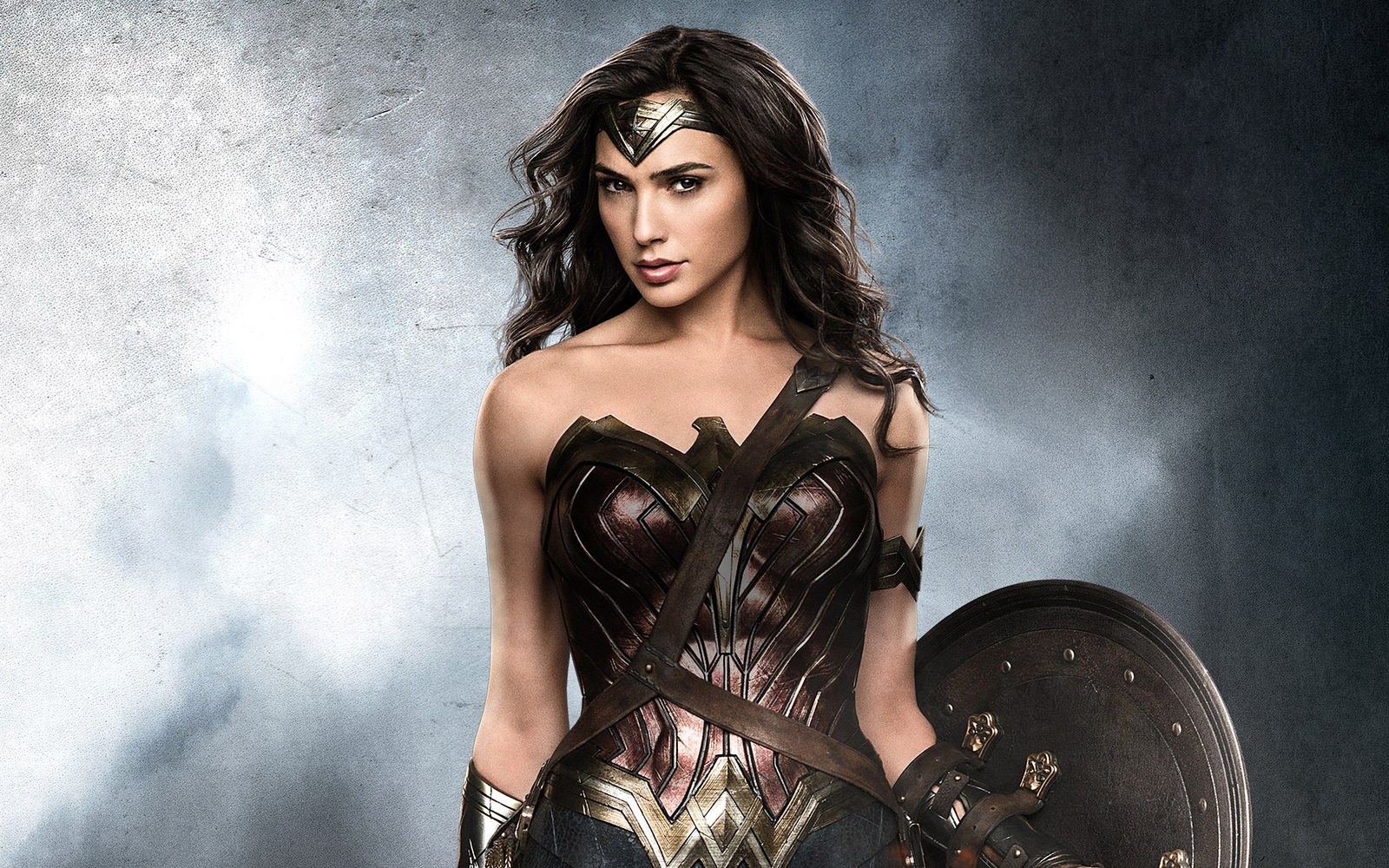9 reasons why ‘Mughal-E-Azam — The Musical’ is essential viewing in the UAE
 Image Credit:
Image Credit:
It’s a brave and potentially risky move to recreate a classic that has set a benchmark in cinematic excellence. History hasn’t been kind to such feeble regenerations, with ‘Ram Gopal Varma Ki Aag’ — the director’s antagonising spin on the western classic ‘Sholay’ — often landing the top spot on a list of worst films in Bollywood.
Remind Feroz Abbas Khan of this little known fact and the theatre director and playwright doesn’t deny the responsibility one must shoulder when undertaking such a project. In fact, in an attempt to bring filmmaker K Asif’s iconic ‘Mughal-E-Azam’ to the stage in 2016, Khan found himself close to a nervous breakdown.
“I still haven’t been able to get over the fact that three days before the first show, I almost had a nervous breakdown; and I am not saying this for effect,” Khan told Gulf News tabloid! from Mumbai.
The theatre veteran, who will bring the stage adaptation of ‘Mughal-E-Azam’ to Dubai this week, continued: “It was the first time it had happened to me on stage. I kept thinking I am doing such a great disservice to a great piece of work.”
Little did Khan know at the time that ‘Mughal-E-Azam — The Musical’ would go on to win seven Broadway World Awards the following year, including ones for Best Indian Play and Best Director.
As Dubai sets the stage for a three-day performance of the doomed romance, we breakdown why the musical should be on your watch list this month.
‘Mughal-E-Azam’ was originally a play
Few know that K Asif’s cinematic masterpiece, which released in 1960 after 15 years of struggle, was in fact based on a play.
“If you look at the original ‘Mughal-E-Azam’, you realise it resembled a theatrical production. So, I looked into the roots and realised the film had originated from a play called ‘Anarkali’,” revealed Khan.
‘Anarkali’ was first written by Imtiaz Ali Taj in 1922, which took readers into the Mughal Empire, narrating a love affair between servant girl Anarkali and the crown prince Salim. So incensed was Emperor Akbar when he learnt of the affair that he ordered Anarkali to buried alive behind a wall.
“K Asif sahib [sir] had been very impressed by a stage production of the original story and he decided he wanted to make it into a movie, especially when he realised that a theatrical scale would be very small and simply could not capture the imagination the way cinema could,” said Khan.
A second ‘Mughal-E-Azam’?
In his research to unearth details about the story, Khan also discovered that even before K Asif’s masterpiece released, another film on the subject had already released during the former’s decade-long struggle to bring the film to screen.
“K Asif sahib had struggled for years to mount the production. And interestingly, during this time, another film had already been released called ‘Anarkali’. But even with this setback, K Asif did not give up. He decided to give a whole new experience to his film and the rest is for all to see,” said Khan.
Recreating a masterpiece
“It was never my idea to make a film into a play,” stressed Khan. “I was dreaming about doing an Indian musical and when I was watching this movie, at a slightly more mature age, I could connect with the way the film was made.
“It struck me that it is clearly a theatre piece, written in a style of theatre writing which was prevalent before cinema came to India — a style we called Parsi theatre. It used decorative language, focused on a larger than life conflict and dared to affect with the audience’s mood.”
However, to envision is one thing, but Khan’s journey to create his own masterpiece would be as long as Asif’s own struggle to bring the theatrical piece to cinema.
“When I saw the film, I knew I wanted to make it into a play but I didn’t think India had the wherewithal or the kind of money to mount such a production. Plus, we weren’t sure if the audience was willing to spend the money to watch this kind of theatre production,” Khan said.
How Shabhana Azmi and Farooq Sheikh played a part
It was in November 2004 when ‘Mughal-E-Azam’ released once again in cinemas, this time, in full colour as part of a restoration project undertaken by the Shapoorji Pallonji Group, spearheaded by Shapoorji Mistry, who was the grandson of the original producer of the film, Shapoorji Pallonji Mistry.
During this time, Khan was in Hyderabad touring his award-winning play ‘Tumhari Amrita’ with the late Farooq Sheikh, who died in Dubai of a heart attack in 2013, along with the veteran actress Shabhana Azmi. Khan admitted that all three of them weren’t keen on the new version of the film at the time.
“All three of us had our reservations at the time because we thought the beauty of ‘Mughal-E-Azam’ was wrapped up in the black and white imagery of the film. We thought colour was going to destroy its essence but it worked,” recalled Khan. “We were deeply roused by watching it at that time and that got me thinking.”
Khan said that when he finally approached Shapoorji Pallonji with his idea, the only brief they had was to make a production as big as the film.
Tale about female empowerment
Set in a time when the Mughal Empire reigned across India, the story not only essays the tragic love affair between a courtesan and a prince, but gives voice to the common man, according to Khan.
“At its core, the story is truly about women empowerment. Here was an ordinary woman who took on the might of an empire and dared to defy the most powerful man in the country.”
Khan also stressed how important a role the story’s message played in celebrating the spirit of a woman.
“People focus on the love story or the father and son conflict, but it is Anarkali’s defiance that forms the spine of the story. At the time the film released [13 years after India’s partition in 1947], it also paid tribute to the role of women in India’s freedom struggle and the power they wielded in the world’s largest democracy. Here is a story about everyday people for who believed gender and class divides needed to be challenged. For that alone, the story was quite ahead of its time.”
Bollywood favourite Manish Malhotra roped in
Khan recalled his brief to his set and costume designers was very specific. “It had to be very big. The imagination had to be big. The production designer, the projection designer and the lighting had to support that vision,” he said.
But it was Manish Malhotra, the designer of choice to Bollywood’s biggest stars, who tied the whole project together by creating the final look of the stage production.
“If you remember the original movie, all the costumes were in black and white. The only time we saw it in colour was during the song ‘Pyar Kiya Toh Darna Kya’ and the climax. So, when I spoke to Manish Malhotra, I told him one thing: transport yourself to the Mughal era and into Akbar’s court. If you were the court designer, what would you do for these costumes? And that was it,” said Khan.
Malhotra went on to design the 575 costumes used in the stage production.
Reimagining the choreography
As the first chords of ‘Pyar Kiya Toh Darna Kya’ play out, few may resist imagining a young Madhubala staring defiantly at Emperor Akbar in the Sheesh Mahal or the Palace of Mirrors. When it was time recreate this for stage, Khan employed the ‘extraordinary talent’ of young choreographer Mayuri Upadhya to reimagine those magical moments for stage.
“I told Mayuri it needs to be authentic Kathak [Indian dance form] but within your interpretation. One of the finest pieces in the musical is the ‘Pyar Kiya…’ sequence and that’s a highly interpretative piece by Mayuri. She simply brings it alive on stage,” said Khan.
Introducing a new Salim and Anarkali
“To find my Salim and Anarkali was the toughest job,” stated Khan. “Anyone who closes their eyes even today is reminded of Dilip Kumar, Madhubala and Prithviraj Kapoor in those iconic roles. They are ingrained in us.”
Khan admitted that finding his Salim was slightly easy because all he was looking for was “an actor with a personality.” He continued: “But the problem with Anarkali was that she needed to be a singer. And someone who could sing live and was a classically trained one at that. She also needed a personality, was of fine beauty and a fine actor. Bringing all that together was a tough call.”
Khan finally found them in Neha Sargam and Priyanka Barve, who alternated in playing Anarkali. Shaad Ali became his Salim, theatre actor Nissar Khan his Akbar and Sonal Jha signed on as Jodha Bai.
Understanding the millennial mindset
It’s fine to recreate a classic, but is there really a demand or an understanding of sacrificing love and life in the face of duty and valour for the millennial mindset? Khan has his own take.
“‘Mughal-E-Azam’ is a story that surpasses time and space. In the times we live in, hatred seems to have made a comeback. And it is in such times of hatred, a love story such as this once again gives you hope. No matter what it is, be it the indomitable spirit of a human being to stand up to power or injustice or something more personal, but I do think it this story of defiance bears a strong resonance for the times we live in.”
Should we read between the lines, alluding to India facing its own times of turmoil following the wave of protests sweeping across the country in defiance of the controversial Citizenship Amendment Act (CAA), which many deem as anti-Muslim?
Khan simply laughed in response, adding: “I can say it openly but will leave it for a different time. Conflicts and concerns over identity are so sharp, arguments we should have transcended ages ago. But I know in the end, humanity will win, love will win.”
———————————————
Did you know?
History has borne witness to the hurdles K Asif faced to visualise his period epic. Parts of the film were scrapped when key members from the film’s unit, including the lead actor, moved to Pakistan in wake of the partition. In the wait to sign on new actors, Chandramohan, who was to play Emperor Akbar, suddenly died.
Amid the actual film production, Kumar and Madhubala’s own love affair had reached a tragic end while her father was attempting to make a business deal of the alliance. In Kumar’s biography, the feather scene in the film — one of the most iconic moments on screen — was filmed when the two stars had stopped speaking with another.
By the end of the film production, Asif and lead actor Kumar were also not on speaking terms and the latter even skipped the film’s premiere.
Madhubala, meanwhile, was suffering from congenital heart disease and would have frequent lapses during the 10-year-long production. She died nine years after the release of the film, at the age of 36.
——————————————
Don’t miss it!
‘Mughal-E-Azam — The Musical’ is being staged at Dubai Opera on January 30, 31 and February 1. Show starts at 8pm across all days, with tickets priced from Dh150. They are available online at Dubaiopera.com
The top 45 stories of the decade
It’s only been 10 years, but in that time the world has been transformed. Social media has gone from angel of democracy to demon. Climate change has become something we can see with our own eyes. All over the world, established orders have been overturned.
In Israel, new technologies like auto-tech, fintech, AI and food-tech have emerged to dominate Israel’s high-tech scene, while Israel’s food scene has come of age – as you can tell by the high number of accolades to Israeli restaurants rolling in. Israeli TV has also won its fair share of praise, spurring an unexpected new area of export.
In this decade, Israel lost one of its most internationally popular leaders, Shimon Peres; but women the world over got two strong new role models — Israeli actor Gal Gadot, who stormed the world with her portrayal of Wonder Woman, and Netta, who swept Eurovision with her bubbly empowerment song, “Toy.”
We’ve looked back through our archives to discover your favorite stories. It’s an extraordinary journey that charts the emergence of Israel’s aid industry, the move toward veganism and alternative meats, and the growth of tourism to Israel – from just 1.9 million tourists to Israel in 2010, to 4m. in 2019.
Some of the technologies we wrote about went on to huge success, some pivoted, and some – notably Shai Agassi’s Better Place – went out with an almighty bang.
Take a look through the decades and remember some of the highlights of every year.
2010

An IDF doctor tends to a patient at the field hospital in Haiti, January 23, 2010. Photo courtesy Israel Ministry of Foreign Affairs
One of the decade’s most iconic gadgets, Amazon’s Kindle e-reader, was largely developed in the heart of Israel’s high-tech center in Herzliya.
In June 2010, a professor from Bar Ilan University announced that he was developing a male contraceptive pill. His hope was that it would be out on the market within five years. While the idea created huge interest, the product ultimately never came to fruition.
Israel gained worldwide praise for the speed and efficiency with which it offered aid to Haiti in the wake of a catastrophic 7.0 magnitude earthquake that killed around 160,000 people. The field hospital set up by the Israel Defense Forces was one of the most advanced hospitals in Haiti. Five years later, Israel was still in Haiti helping rebuild the community. Haiti was the first time that the world really sat up and noticed Israeli humanitarian aid.
A breakthrough from Hadassah’s Human Embryonic Stem Cell Research Center was poised to enable cultivating embryonic stem cells for treatments for disorders such as Parkinson’s disease, diabetes and age-related macular degeneration. This later formed the basis for CellCure Neurosciences, currently developing OpRegen for treating dry AMD.
2011

The beaches of Tel Aviv. Photo by Shutterstock
Our top story of 2011 was on Vaxil Bio Therapeutics, which was developing a vaccine that could activate the body’s natural immune system to seek and destroy cancer cells. Since then, the company has completed a Phase I/II clinical trial in multiple myeloma patients, and is advancing toward clinical studies in additional solid tumor indications.
Yokneam-based Neuronix developed an electromagnetic stimulation system for treating moderate Alzheimer’s disease, allowing patients to regain faded cognitive skills. Though approved for use in Europe, Australia and Israel, in 2019 an FDA advisory panel decided that the benefits of the system did not outweigh the risks to patient health.
In June, we published a list of the 10 best beaches in Israel. Nine years later, the story continues to be one of our most popular, which for a country with as much beautiful coastline as Israel’s, isn’t that surprising.
In May, we launched the first of a series of articles on hiking in Israel. The top 10 hikes in Israel was first, followed by water hikes, desert hikes, hikes in Jerusalem, and hikes in the Dead Sea.
2012

Tal-Ya’s trays catch every drop of dew. Photo: courtesy
To celebrate Israel’s 64th birthday, ISRAEL21c described 64 blue-and-white innovations with the potential to transform and enrich lives across the planet.
The US developer of skyTran chose Israel as the perfect place to pilot the software-guided personal transport pods that glide on a cushion of air. While the Tel Aviv project has yet to get off the ground, additional Israeli cities including Netanya and Eilat have since signed development deals with skyTran to upgrade public transportation.
This story about groundbreaking agricultural innovations from drip irrigation to drought-proof seeds proved so popular, and so important, that we updated it in 2019.
An amazing invention that turns pet droppings into harmless, odorless powder within seconds has developed into game-changing applications for human waste-management in the United States and Brazil.
2013

Pomegranate juice on sale at the Carmel Market. Photo by Anna Wachspress
The outright winner for story of the yearin 2013 – though we could never completely understand why – was our piece on 10 great reasons to love the pomegranate. Pomegranate, anyone?
In 2013, we began a new series on things to do for free in various cities around Israel. Our first story was an immediate hit and continues to be popular. We updated it earlier this year.
To celebrate Israel’s 65th birthday, we took a look at some of the incredible ways Israel is helping to look after our planet. It’s still an impressive list.
When we reported on CartiHeal in 2013, the novel Israeli implant – which provides a scaffold for the body to regenerate joint-protecting cartilage – was already regarded as a major potential advance. It also featured in the top stories of 2016. Find out more below.
2014

The Iron Dome proved the unexpected hero of the 2014 war with Gaza. Photo by Shutterstock
From the Babysense baby breathing monitor to the Skysaver emergency evacuation device, this list compiled 18 potentially lifesaving technologies developed in Israel.
In 2014, the Iron Dome defense system emerged as the undisputed savior in Israel during the summer conflict with Gaza. Born out of necessity and Israeli chutzpah, the Iron Dome intercepts rockets, artillery and mortars headed for population centers. Sneak preview: Some of the prototype components were taken from a toy car.
Most of these unusual places to lay your head that we featured in this story– including a yurt and a converted bus – are still in business and popular with visitors looking for a different hospitality experience.
Medical devices and pharmaceuticals are a risky business and not all make it to market. But many of the exciting products anticipated in 2014 went on to successful clinical trials, such as Premia Spine’s TOPS alternative solution to spinal fusion surgery and CartiHeal’s implant for treating cartilage lesions in arthritic and non-arthritic joints.
2015

Is clean meat on the way? Photo by Shutterstock
This story exploded on the Internet, going viral within a day. It featured the work of nonprofit Modern Agriculture Foundation, which launched the world’s first feasibility study to determine how to create commercial tissue-engineered chicken breast. We featured the organization again in 2017, and it is still hard at work collaborating with academics and commercial companies to create a clean meat alternative.
We asked photographers across Israel to help us out with this gorgeous compilation of photographs to celebrate Israel’s 67th birthday.
3. 12 impossible ideas that Israelis turned into reality
Tell an Israeli that their idea is preposterous, and you’ve just given that inventor a reason to see it through. We loved this article, which highlights not only Israeli innovation, but the Israeli can-do attitude that takes an impossible idea – irrigating crops in the desert, or a missile defense shield for an entire country — and turns them into reality.
4. Israeli school builds cool classroom for ADHD teens
Our readers loved this story on a new classroom built at the Darca High School inKiryat Malachi, developed specially for children with attention and learning disorders. The room featured bouncy chairs made from yoga balls, walled off cubicles, desks on wheels, and a touch of the outdoor.
5. How well do you know Israel? The quiz
We knew it was going to be a tough one, but we were still surprised when virtually no-one managed to get a full 25 out of 25 questions right. You can still try this quiz. Will you get it right? Don’t say you haven’t been warned!
2016

CartiHeal is advancing its implant for cartilage regeneration. Image by Natalia Budianska Shutterstock.com
1. Syrian refugee creates website to thank Israelis
A Sunni Muslim originally from the city of Homs created Thank You Am Israel, a website dedicated to the Israeli and Jewish organizations and people helping Syrian refugees.
2. 9 of the best Israeli snacks
The rising global popularity of Israeli cuisine isn’t limited to gourmet fare. Here we tempted your taste buds with Israel’s most iconic snack foods, such as Bamba and Krembo, getting attention from bloggers and noshers around the world.
3. 9 of the most beautiful sukkot in Israel
Our readers loved seeing photos of the gorgeous “booths” created for dining during the Sukkot holiday in the fall, from Jerusalem’s Waldorf Astoria, to kibbutzim in the north and south, to the Samaritan communities of Mount Gerizim and Holon.
4. “My Name is Israel”
Our downloadable, printable 15-slide exhibition shares the stories of Israeli aid in the wake of international disasters and Israelis helping refugees — even citizens of enemy nations — and sharing their expertise and knowledge worldwide. This DIY exhibition, still available on our home page, was displayed in creative ways in several countries.
5. Cartilage regeneration on the way for knees, osteoarthritis
CartiHeal, mentioned already in 2013,caused quite a stir among readers for its groundbreaking Agili-C implant to treat cartilage and osteochondral defects in traumatic and osteoarthritic joints. Agili-C has now been implanted in over 500 clinical study patients with knee, ankle, and great toe cartilage lesions in Europe and Israel; clinical studies have begun in 15 US sites.
2017

Israeli actor Gal Gadot as Wonder Woman. Photo: courtesy
When Hurricane Harvey barreled into Texas in August, Israeli NGO, IsraAID rushed to help. The story touched a chord and was shared on Facebook alone more than 260,000 times.
2. 14 things you didn’t know about Gal Gadot
2017 was most definitely Gal Gadot’s year. In fact, so were 2018 and 2019, and 2020 could turn out to be just as successful for this Israeli actor. But it was in 2017 that Gadot first stormed the world with her role as Wonder Woman. Find out how Beyoncé helped her get the part.
3. 25 brilliant tech companies to watch in 2017
In January, we asked high-tech experts which companies to watch for in the coming year. They identified many hot growth areas including augmented reality, auto-tech, fintech, clean-tech, drones and digital health. And many of the companies they mentioned have indeed gone on to significant things.
4. 69 fabulous reasons we love Israel
For Independence Day, we put together a slideshow of photographs showing some of the many reasons we love Israel.
5. Test your glucose levels without drawing blood
Integrity Applications developed a glucose monitoring device that allows diabetics and pre-diabetics to track blood sugar levels without the need to prick a finger. The device is now on sale in several locations around the world.
2018

Koolulam mass singalong at the Tower of David Museum, June 2018. Photo by Ricky Rachman
1. 800 Jews, Christians, Muslims sing ‘One Love’ in Jerusalem
You just can’t watch this video without getting goosebumps. Israel social singing sensation Koolulam gathered Jews, Christians and Muslims at the Tower of David Museum in a vocal show of unity coinciding with the Muslim holiday of Eid al-Fitr.
2. Israeli scientists develop implanted organs that won’t be rejected
It’s the stuff of sci-fi, only it’s real: Israeli researchers invented the first fully personalized tissue implant, engineered from a small fatty tissue biopsy from the patient. This will make it possible to engineer any kind of tissue implant for any part of the body, without danger of rejection.
3. One drug could treat Alzheimer’s, MS, Crohn’s and more
Hebrew University-Hadassah Medical School Prof. David Naor is developing a single drug that could effectively treat incurable inflammatory diseases such as Crohn’s disease, ulcerative colitis, rheumatoid arthritis and multiple sclerosis as well as neurodegenerative maladies such as Alzheimer’s disease.
4. 8 of the most anticipated hotels opening in 2018
You’re always on the lookout for exciting new places to stay in Israel, and this list really whet your appetite. Now you can book rooms at (most of) these fabulous hotels in Tel Aviv-Jaffa, the Galilee and the Negev, aside from two that still haven’t opened.
5. Rescuers turn to Israeli tech to save trapped boys
Maxtech Networks’ communications technology helped divers free 12 boys and their coach trapped for 11 days in a flooded Thai cave.
2019

REE’s prototype vehicle chassis. Photo by Yuval Chen
It is testament to just how successful and admired Israeli TV shows have become worldwide, that our most popular story of the year was about the best Israeli TV. While many Israeli shows have been remade, streaming services have opened up the original Israeli versions to viewers all over the world to great acclaim. Last week, the New York Times named Hatufim (Prisoners of War) the finest international TV show of the decade, and Fauda came in at number eight.
2. Buy fresh unsold food from restaurants
The new SpareEat app that lets restaurants and markets offer surplus food at the end of the day at a huge discount appealed to readers two-fold – firstly they get to eat great Israeli restaurant food at a discount, and secondly – it reduces food waste. It’s a win-win!
3. An Israeli startup is totally reinventing how cars are built
The inventors thought investors would laugh at them when they came up with the revolutionary idea of a flat modular platform, a bit like a skateboard, that houses all the car’s major components, but instead they loved it. We wrote about Ree in September. The following month, the company unveiled its flat-chassis technology inside Hino Motors’ new FlatFormer design.
4. Could immunotherapy treatment from Israel cure cancer?
In January we ran a story on Jerusalem startup Immunovative Therapies, which is developing an immunotherapy that could potentially cure cancer. No surprises why this was popular. The company has conducted dozens of clinical trials, but it’s still a very long road ahead. Worth watching in future years.
5. 13 reasons you should eat like an Israeli
Large breakfasts, salad with every meal, copious amounts of vegetables and olive oil, a reliance on the Mediterranean diet – it’s no surprise that Israel was #1 on a new ranking of countries with the lowest rate of diet-related deaths worldwide, and #10 on the 2019 Bloomberg Healthiest Country Index. In our article we took a look at the reasons why.
This is the guy who’s taking away the likes on Instagram
NEW YORK — On a recent afternoon, Adam Mosseri, head of Instagram, assembled members of his staff to discuss the secret details of a critical project: the elimination of public “likes.” You’ll be able to see how many hearts your posts get, dear user, but not other people’s tallies. The effort is referred to internally as “Project Daisy” — as in “Does she love me? Or love me not?”
Likes are the social media currency undergirding an entire influencer economy, inspiring a million Kardashian wannabes and giving many of us regular people daily endorphin hits. But lately, Mosseri has been concerned about the unanticipated consequences of Instagram as approval arbiter.
He kept thinking about an episode of “Black Mirror,” the British dystopian anthology series, in which the characters rate everyone they interact with on a scale of 1 to 5 stars. (It doesn’t end well.)
Mosseri knows something about dealing with dystopian tech fallout. He came to Instagram in October 2018 after years overseeing the Facebook News Feed, an unwitting engine of fake news, inflammatory rhetoric and disinformation. He wants to avoid similar pitfalls at Instagram, which is owned by Facebook.
But making likes private will be a major shift for Instagram’s more than 1 billion users, for whom daily assessment of one another’s popularity has become like breathing.
And so the company is carefully considering how this will happen, for months “dog-fooding” (internal Insta-talk for testing) different variations of the new format. A post’s achievement of “thousands of likes” or “tens of thousands of likes” might still be public. Users might still be able to find others’ likes with a little more digging in the app. But the average teenager under pressure to be popular won’t need to suffer the indignity of only his mom liking his skateboarding post.
Mosseri sees Project Daisy, which the company intends to introduce early this year, as a signal to the world that he has learned from Facebook’s mistakes and is thinking about the larger, potentially corrosive impact of social media.
“We should have started to more proactively think about how Instagram and Facebook could be abused and mitigate those risks,” he said. “We’re playing catch-up.”
In the meeting, he asked his team, “How do we depressurize the app?” Brands would still need to count likes for their advertising, so what would that look like? Nobody wanted to break up the “BeyHive” (Beyoncé’s 138 million followers) or upset a major influencer like Selena Gomez (166 million), but does that mean the average popular teenager with 1,000 followers will see a similar display? How would users outside the United States respond? At one point, Mosseri stopped a designer and asked, “But how would that look in other languages?”
Then he exhaled, stretched his arms behind his head and said, “I just don’t want to piss anyone off.”
By then, I had spent several afternoons with Mosseri, and his concern struck me as the best encapsulation of his fascinating, sometimes fraught tenure at Instagram. The man who is working to mostly eliminate likes really wants to be liked.
The selfie factory
Mosseri is a close confidant of Facebook’s chief executive, Mark Zuckerberg, and he knows that his installment at Instagram was met with widespread skepticism among its staff, seen as evidence that the blue, squaresville platform had officially swallowed the chic rainbow-colored one.
For years, Instagram had tried to maintain at least the appearance of independence from Facebook, which acquired it for $1 billion in 2012. Then Instagram’s founders, Kevin Systrom and Mike Krieger, clashed with Zuckerberg and departed.
Dozens of employees also left. Two separately functioning teams of engineers and product managers were combined. Instagram had even changed its name to “Instagram from Facebook” — appalling many of the influencers who wouldn’t be caught dead on Facebook, which for them had become the realm of cantankerous uncles venting about politics and random high school friends posting reunion photos.
When Mosseri was introduced as Instagram’s new leader at a question-and-answer session with employees, someone asked, in effect, “Why are you making the head of Instagram someone who failed at Facebook’s News Feed?” according to a person who attended the meeting.
“It was a huge, emotional event when Kevin and Mike left. So there was definitely skepticism about me stepping into the role,” Mosseri told me.
Concerns spread beyond Instagram’s corporate walls to its most obsessive users. Would the relationship with Facebook taint the app that had transformed the way we take pictures and turned an entire generation into selfie-taking machines?
This last fall, Zuckerberg, two days after he was grilled by Congress about Facebook’s handling of user data, political advertising, disinformation and child pornography, stopped by Instagram’s offices. Mosseri posted a selfie with his arm around him. “Mark stopped by Instagram!” Instagram users weighed in: “Instagram has lost its way” and “Instagram is dead” and “Make Instagram great again.”
But while Zuckerberg has been cast by critics as defensive and closed off to criticism and the news media, Mosseri, 36, projects the opposite. He’s affable and easygoing, exuding the laid-back intensity of a Bay Area tech executive who was born in the East Village. He is accessible to news media and unafraid of the occasional Twitter war with acerbic tech columnist Kara Swisher (a contributing opinion writer for The New York Times). He posts an endless stream of relatable photos of his young sons (#DadLife). And he does regular “ask me anything” sessions.
This charm offensive, combined with Mosseri’s efforts to stop bullying, remove photos of self-harm and implement other safety and integrity measures that Facebook may have been late to, has won him respect. But it has not quieted the larger concerns about the mother ship.
“There’s more anxiety now just about, ‘What is our place within the broader company? How do we relate to Facebook? How do we relate to WhatsApp?’ It’s less anxiety around me,” Mosseri said. Then he added, “But I just want to be careful about blind spots here, because if there was a lot of anxiety about me, maybe they wouldn’t tell me.”
Instagram has revolutionized shopping, dealt a near-death blow to women’s magazines, taken celebrities from TV and movie screens to our fingertips and made Shih Tzus and personal trainers household names (at least in some households.) To discuss the photo-sharing app’s future, Mosseri and I sat, among other places, in the sunny food court in its New York headquarters, in a building that once housed a Wanamaker’s department store and also includes the Facebook offices.
Designed to share everything, the company makes certain that visitors to its base of operations don’t share anything, asking most members of the news media who are granted access to sign nondisclosure agreements. (Mine was waived.) The white loftlike space is a sort of Willy Wonka chocolate factory of social media, with selfie-ready backdrops at every turn. There is an iridescent beehivelike installation, a complimentary gelato and biscotti bar and a rotating wall of posts from @shop, Instagram’s latest effort to bring in small businesses.
Instagram’s worldwide staff totals more than 1,000, and even as Mosseri tried to convince them that he is not just a “Facebook guy,” he must also convince Zuckerberg and Facebook that his decisions will benefit the parent company.
The way Facebook executives see it, Instagram would not have become so ubiquitous and beloved if it had not siphoned users and support from Facebook. Now, with Mosseri leading the charge, it is time for Instagram, the company’s fastest-growing asset, to give back.
“There is this misperception about the journey that Instagram has been on since Facebook acquired it,” said Justin Osofsky, a longtime senior Facebook executive who is now chief operating officer of Instagram. “There was this narrative that it was a team of 13 people and the startup journey led to an inevitable outcome for Instagram, when I believe Facebook played an incredibly important role in its growth.”
In an email, Zuckerberg said Instagram’s founders had “created something special, and the team has taken that and helped build it into something that people around the world love.” But, he added, “we still have a lot to do to make the experience even better and make sure we’re living up to what people expect from us.”
This delicate balance — keeping both Facebook and Instagram happy and facing animosity in both camps — reminded Mosseri of his father, an Israeli American psychotherapist who speaks Hebrew with an American accent and English with an Israeli accent.
“I feel like I speak two languages and neither is perfect,” Mosseri said. “It’s like, either place you go you get, ‘Where are you from?’”
Jogs with Zuckerberg
Mosseri’s story began like those of many tech executives: in college. He was a freshman at New York University when he started designing websites, mostly to help pay the rent on the windowless room in the one-bathroom apartment that he shared with five roommates. He started a small web design firm with a partner, Sidney Blank, who described it as “two guys with a couple employees futzing around.”
Mosseri’s firm got a couple of commissions from Brown University and the Architectural League of New York (his mother is an architect), including one to create an interactive rendering of what a redesigned World Trade Center might look like. In 2005, he opened a West Coast office, following a couple of friends to pursue startup riches in San Francisco.
There, he created Boombox, a music-sharing app. Before he received a cease-and-desist order from the Recording Industry Association of America, the app caught Facebook’s eye. Mosseri’s wife, Monica Mosseri, was working at Facebook in operations; her husband had applied there several times but never got an interview. Now, as the company eyed music sharing, he had an in.
In 2008, he joined Facebook’s design team, committing so completely that he’d sometimes crash on a sofa in Silicon Valley with other early Facebook executives rather than go home. Thinking like a designer but coding like an engineer, he embodied the work-hard-play-hard ethos that Facebook looked for in its employees at the time, said Soleio Cuervo, a former product designer at Facebook.
“Facebook has this stigma of being traditional Silicon Valley nerds,” Cuervo said. “But I actually think it’s a very social culture. Adam played on our co-ed soccer team.”
Like many other early Facebook employees, Mosseri got close to Zuckerberg. They occupy similar social circles, they have children who are about the same age, and they occasionally go on morning runs together. Zuckerberg eventually entrusted Mosseri with overseeing the News Feed: the stream of links, photos and miscellaneous rants that Facebook’s more than 2 billion users post in more than 100 languages.
Revelations that Russian trolls had meddled to help elect President Trump in 2016, and that the News Feed had been used to spread disinformation during the campaign, set off a series of congressional investigations into Facebook’s practices. Social media, which had been designed to bring us together, had become the ultimate tool for tearing us apart.
Publicly, the blowback landed on Zuckerberg, but internally it was Mosseri who had to provide many of the answers. He spent the months after the 2016 election fielding questions about how this happened and how he could make sure it would not happen again.
“I was going around the world, talking to a lot of very harsh critics of us, trying to sift through all the noise and find the signal and figure out how to address these issues and help steer the ship,” Mosseri said.
The bully filter
Even as criticism of Facebook reverberated and younger users in the United States in particular abandoned it, Instagram maintained its image as a safe space to share photos of first birthdays and avocado toast.
Facebook purchased Instagram in 2012, when it had 30 million users, and treated it largely as a side project, albeit a profitable one. But Instagram grew faster than anyone had expected. It shrewdly mimicked its rival, Snapchat, introducing the widely popular video-sharing Stories feature, whose private tallying of “watches” has informed Project Daisy.
Users who may have felt their privacy was compromised on Facebook used Instagram to exchange direct messages and share personal moments. In 2018, Instagram’s net advertising revenue in the United States reached nearly $6 billion, a 70% increase from the previous year, according to eMarketer, a social media research company.
No longer the quirky stepchild with bunny ear filters, Instagram has become the future of Facebook in the United States, according to industry analysts who estimate that it is Facebook’s most lucrative asset and arguably one of the best acquisitions in tech history.
“There is this role reversal in Instagram’s metamorphosis from this tiny thing on the side to being the core platform,” said Venky Ganesan, a managing director at Menlo Ventures, a venture capital firm. “The actual Facebook that we know and love — or know and no longer love — is becoming a relic of the past.”
Zuckerberg began looking at the overall picture of Instagram, WhatsApp and Facebook, or what he calls the “family of apps.” Facebook could seem like a jealous sibling: removing the Instagram logo from its bookmarks menu, for instance, and cutting the traffic that flowed from its platform to Instagram. Instagram users also had an option to cross-post Stories on Facebook, like sharing graham crackers.
Months before Instagram’s founders left, Jan Koum resigned from WhatsApp, the messaging app he co-founded, and from Facebook’s board, amid debates about the amount of user data Facebook had collected from its users.
Zuckerberg installed Mosseri as head of product at Instagram, a move that further convinced its founders, Systrom and Krieger, that the app they created was increasingly under Zuckerberg’s control. Not long after, they announced they would depart, leaving tumult in their wake. “No one ever leaves a job because everything’s awesome,” Systrom told Recode.
Mosseri had to assemble an almost entirely new leadership team at Instagram, installing several Facebook executives in senior roles. He encouraged previously disparate teams that worked on well-being and integrity to collaborate more closely, overseeing, among other things, efforts to make sure harmful posts were promptly taken down.
“We were doing too much on our own and not enough leveraging of all the work that comes from the much larger team at Facebook,” Mosseri said.
Although Instagram was largely insulated from criticism after the 2016 election, two reports, prepared by independent groups and released last year by the Senate Intelligence Committee, found that Instagram had since become a favored tool of Russian internet trolls who sought to sow distrust in the U.S. political system. Their tactics included the creation of fake accounts with hundreds of thousands of followers that targeted African Americans, anti-immigration activists and gun-rights supporters, among others. The app could prove ripe for further interference before the 2020 election.
“From my experiences on the Facebook side, I could try to mitigate some of those risks,” Mosseri said. Always quick to break the tension, he jokes about the heated conversations he has had with his liberal East Coast relatives about Facebook’s role in Trump’s victory, but it’s also cause for introspection. “I try to step back and look at things as effectively as we can and be honest about where we made mistakes,” he said. “I’ve asked myself so many times, if I could go back to 2015 or 2016 and give myself a bunch of advice, what advice would I give myself?”
He also echoed the wider thinking within Facebook that Trump had simply used the platform more effectively than the competition. “Trump used Facebook really well as an advertiser, so I am sure that helped,” he said.
Mosseri likes to say that “technology isn’t good or bad, it just is.” But how could he be so sure? No one really knows what the long-term sociological impact of Instagram will be; it’s too new. “Social media, I think, often serves as a great amplifier of good and bad,” Mosseri said.
In other words, social media is sometimes a cesspool because humanity is sometimes a cesspool. And yet it is Mosseri’s job to make sure the slime doesn’t overtake the subway (to invoke “Ghostbusters”). Instagram is still widely beloved in the United States, but users in Britain largely turned on the platform after reports that graphic images of self-harm on its app might have influenced a 14-year-old girl to commit suicide.
Mosseri quickly banned such images and ordered the development of additional tools to help users avoid bullying. As I was writing this article, Mosseri emailed to say that he wanted to prioritize “well-being focus areas” for Instagram’s teenage users, “including problematic use and loneliness.”
Indeed, the most obvious dark forces — pornography, self-harm, disinformation — seem almost simple compared to the largely unknown long-term impact of a platform that has turned every vacation, every dinner party, every parental milestone into an online performance. Instagram has so incentivized the distortion of reality that it lured moneyed millennials to the doomed Fyre music festival on an impoverished island, a couple fell to their deaths while trying to snap the perfect cliffside selfie, and a woman vented that her 6-year-old son wasn’t as popular as his siblings because images of him received fewer likes.
Eva Chen, director of fashion at Instagram, stressed that the app is an accessory for the majority of its users and not the main event. “So much of the advice I give to young people is not even within the confines or constructs of Instagram,” she said. “Living a life to someone else’s standards of what cool is is not a good way to live.”
But what happens when technology puts the idea of cool in the palm of our hand, tantalizing and taunting us at all hours?
“There are plenty of well-documented reasons to distrust Instagram — the platform where one is never not branding, never not making Facebook money, never not giving Facebook one’s data,” Tavi Gevinson, who became one of the earliest influencers after starting a popular style blog when she was 12, wrote in New York magazine. “But most unnerving are the ways in which it has led me to distrust myself.”
Osofsky, Instagram’s chief operating officer, pointed to Project Daisy as one example of how seriously the company’s leaders take the app’s unintended consequences. “We are willing to question and analyze some of the most core aspects of the service when you think about the next decade of Instagram,” he said.
Mosseri got more philosophical: “Can I get a little nerdy on you for a second?”
I said yes, without reminding him that we’d already talked extensively about “variants” and “ad hoc qualitative research.”
“With a new medium, it starts with euphoria and then goes to hysteria and then hopefully you get some kind of balance,” he said. “It happened with the radio. This happened with TV. There was a huge amount of skepticism about reading Plato because he was writing and no one could argue versus yelling into a public square.”
That means that if Instagram were a Model T Ford, Mosseri is overseeing a period when he will have to start installing seat belts and air bags and other safety features.
“It’s very natural for there to be strong skepticism,” he said. “But I do think we create a lot of good in the world.”
This story was originally published at nytimes.com. Read it here.
Comments
Post a Comment